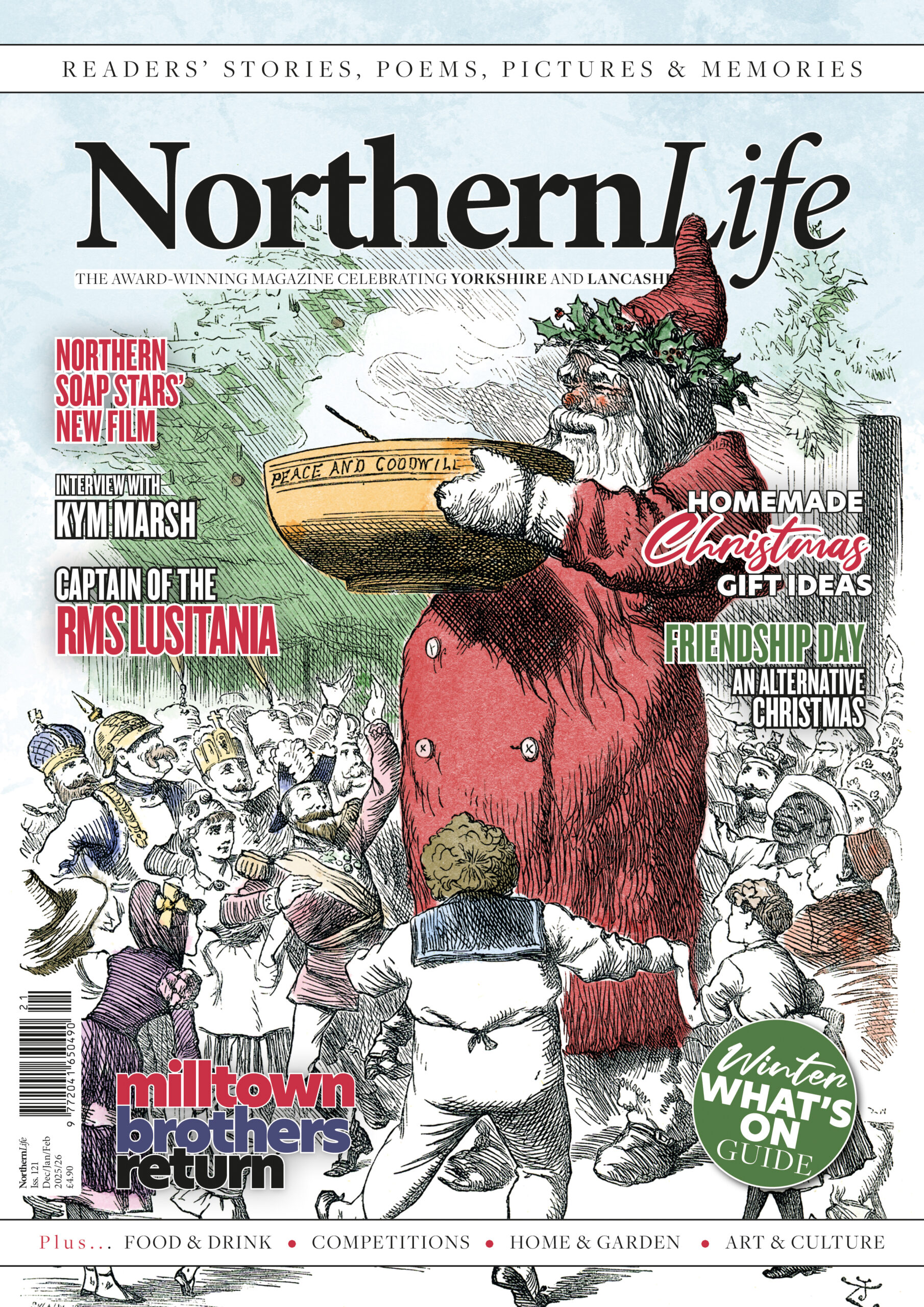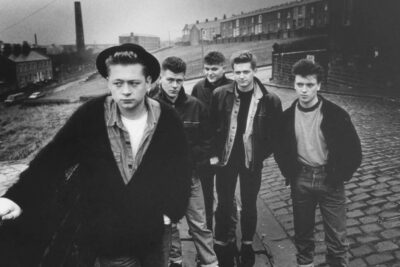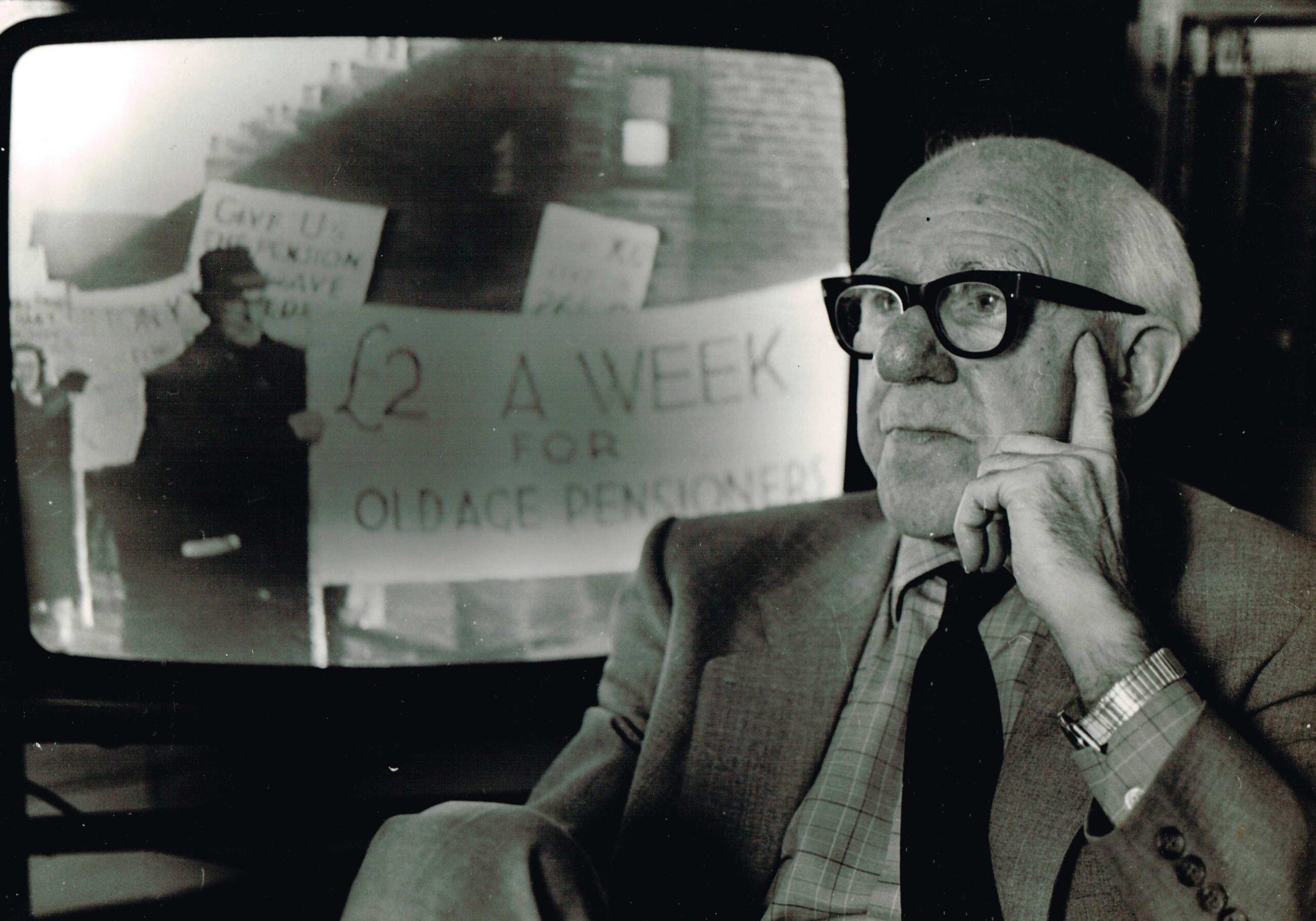
A rare interview with the Lowry of cine, Sam Hanna
by Eric Beardsworth
For today’s TV viewers, Sam Hanna is a tough guy character played by rapper LL Cool J in the US cop show NCIS Los Angeles. But around Lancashire they remember another Sam Hanna, a man from humble beginnings in a working class family, who grew up to be a pioneer both in education and in movie-making.
For many years, teacher Sam Hanna and his trusty camera would record aspects of northern life that otherwise would have been lost forever, and his films have been shown worldwide. Before Sam died, photo-journalist Eddy Rawlinson recorded an interview with him (video above). Here we look at the fascinating story of Sam’s life.
Sam Hanna – The Lowry of Cine
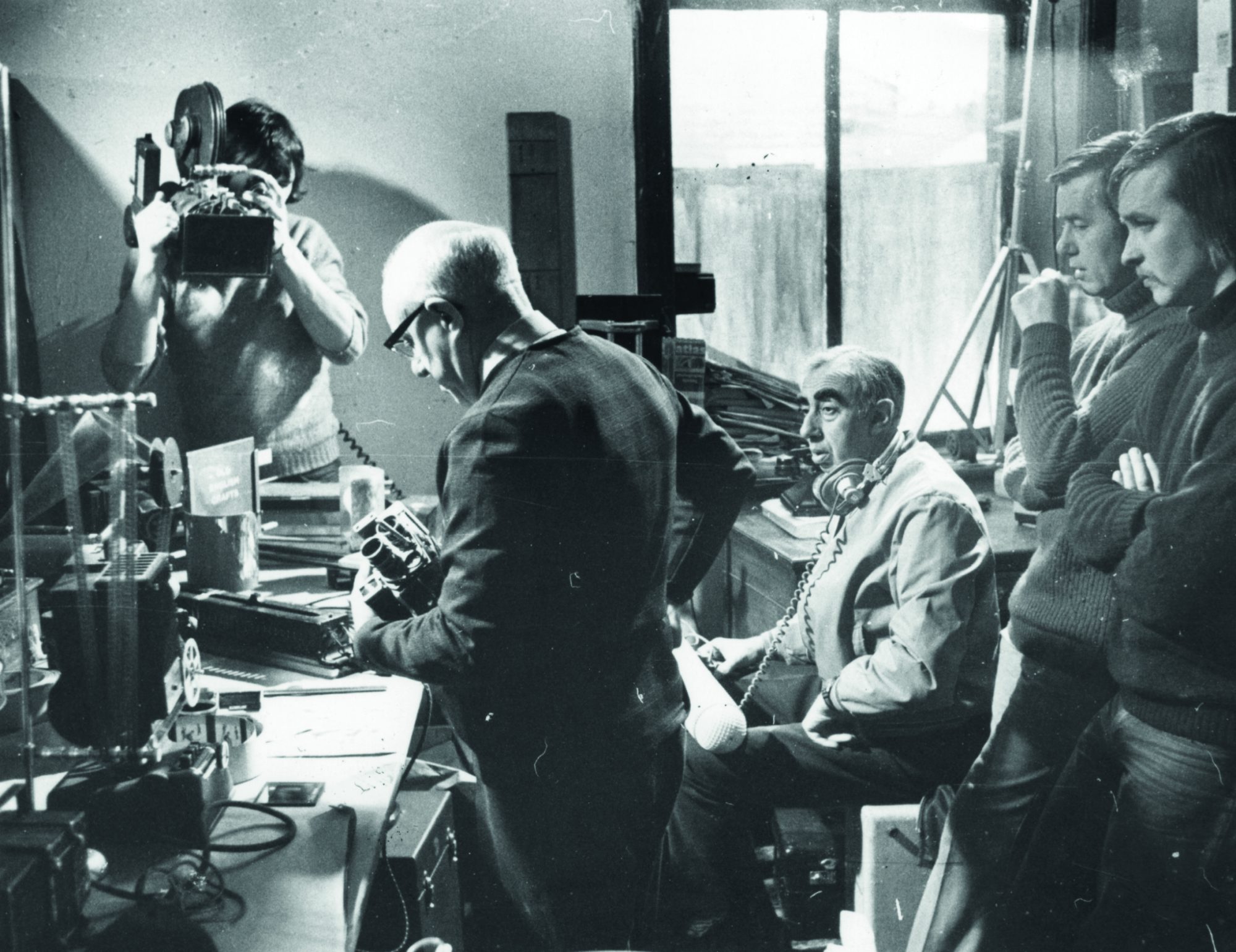
Sam at work
The 20th century was just three years old when Sam Hanna was born to weaver Esther Alice Hanna and her husband Jimmy, who was a check-weighman at a coal mine in Burnley and a tough union official.
In those days, miners were paid according to the amount of coal they dug, and Jimmy’s job ensured they were not cheated of their rightful wage.
The family lived in a succession of rented two-up two-down houses in the Sandygate area of town, and home life was typical of the times. There was a dolly tub for the washing, a back boiler behind the coal fire to provide the hot water, and a galvanised iron bath that would be brought in from the backyard for Friday night bathtime. Mother would sieve ash from the firegrate and use the fine powder as pan scrub, and Sam recalled how he and his brother would scrape the soot from inside the chimney breast and use it instead of toothpaste. Sam recalled in his 1993 autobiography Better Chalk Than Talk: “This fine abrasive soot certainly worked, and more than 80 years on I still have most of my own teeth.”
Sam attended local Church of England primary schools, learning the basics of education in a Christian background. His mum encouraged him to read, and his dad would take him to see theatrical productions.
his uncle Tom brought him a gift that was to keep on giving…a magic lantern.
A life-changing event came when Sam was seven years old. His father had taken him to Burnley’s Victoria Theatre, but young Sam felt ill and had to be taken home. The doctors diagnosed pneumonia and pleurisy, and as there wasn’t enough time to take him to hospital they operated on the kitchen table, removing two of his ribs and draining the fluid from his lungs. Sam’s life was saved only by diligent medical attention and nursing.
During his long recovery period, there were to be no energetic rough games for Sam, but his uncle Tom brought him a gift that was to keep on giving…a magic lantern. Sam watched fascinated as Uncle Tom lit the paraffin wick, adjusted the lens, inserted the glass slides and projected pictures on to the wall.
Sam recalled: “I had never seen anything like this before. I gave ‘shows’ to my family and friends and they too marvelled at the coloured pictures appearing on a white wall. …This was indeed just wonderful.”
Sam started half-time work in a cotton mill at 12, training as a weaver, but it was short-lived. Pondering over a loom, he thought it could run faster and took it upon himself to give it a mechanical tweak or two. The loom did indeed run faster but the cloth was bandage-thin, and Sam’s mum was told he wasn’t suitable for training.
“I wanted to impress on them value of ordinary people, pay tribute to ordinary men and women in crafts.”
Instead, Sam turned his deft hands to woodworking and at 13 he was indentured as a furniture designer and cabinet maker, proudly bringing home his wage of five shillings a week. He went for extra studies five evenings a week at night school, Saturdays too, to improve himself.
He was doing well, earning a top wage, yet his health was not strong and doctor recommended he should change careers. He had taught pupils at art school, and when the Burnley Education Authority advertised for a woodwork teacher, Sam applied and got the job.
On his first day, Sam turned up in suit and tie, driving the black Austin Tourer his wages had bought, an immediately alienated his new colleagues. Sam told Eddy Rawlinson: “When I got to the school gates with my Austin they said I was showing off. I think I started on the wrong foot with the staff. They said I was boasting, showing off.”
He had a further shock at mid-morning break when he went to the staff room and was tersely informed that handicraft teachers were not welcome among the academics. It only made Sam more determined to become a fully qualified teacher, which he did, and he was no ordinary craft teacher. By now he was making his own movies of people at work – in textiles, engineering, woodworking, coopering, blacksmithing, even charcoal burning – and was showing them to his pupils at Barden School in Burnley.
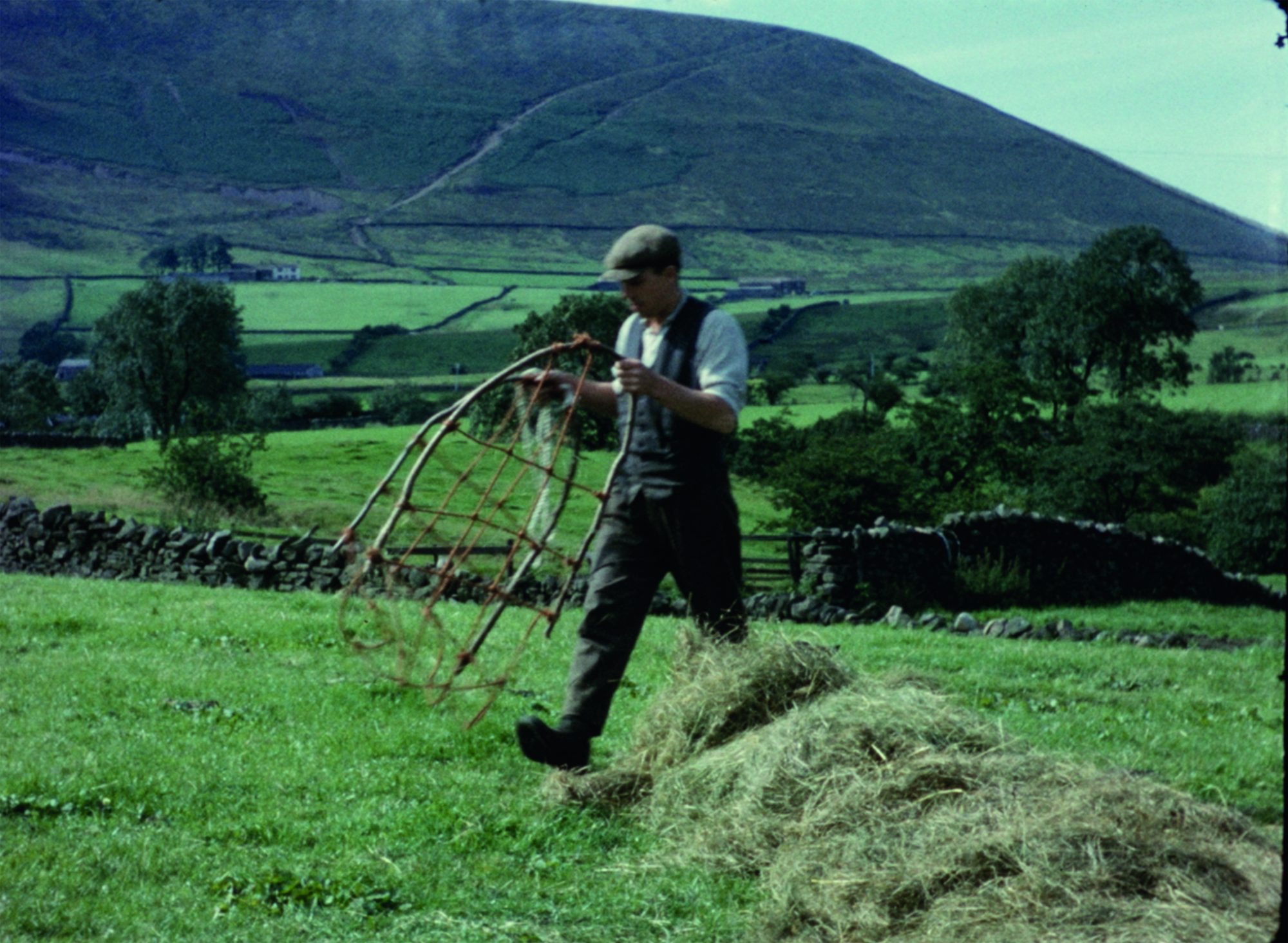
He told Eddy Rawlinson: “I wanted to impress on them value of ordinary people, pay tribute to ordinary men and women in crafts. I thought I would find out these craftsmen and record them on film. The first series I had done was about clog making, because everybody wore clogs then.

Knocker Upper
“I got a lot of enemies among colleagues. They used to tell stories that I wasn’t teaching, I was entertaining. One day two gentlemen came in, introduced themselves as HMIs (His Majesty’s Inspectors). I was showing the boys a film of hand weaving on a daylight screen that I’d invented. They stood in amazement. They said ‘Where have you got this?’
“I told them how I said weaving is important in Burnley but it came from hand loom weaving. I’d found in the Yorkshire Dales two ladies who went out into hedgerows getting plants for dyes. They had no electricity and no gas.
“The men saw this film and said ‘You’re doing the right thing. It’s wonderful’.”
It always galled Sam that his progressive ideas on visual aids were adopted all over the country and abroad, yet were shunned by Burnley’s own local education authority, which refused to buy them. He told Eddy: “There was still a lot of jealousy with the local authority. I can’t understand why.”
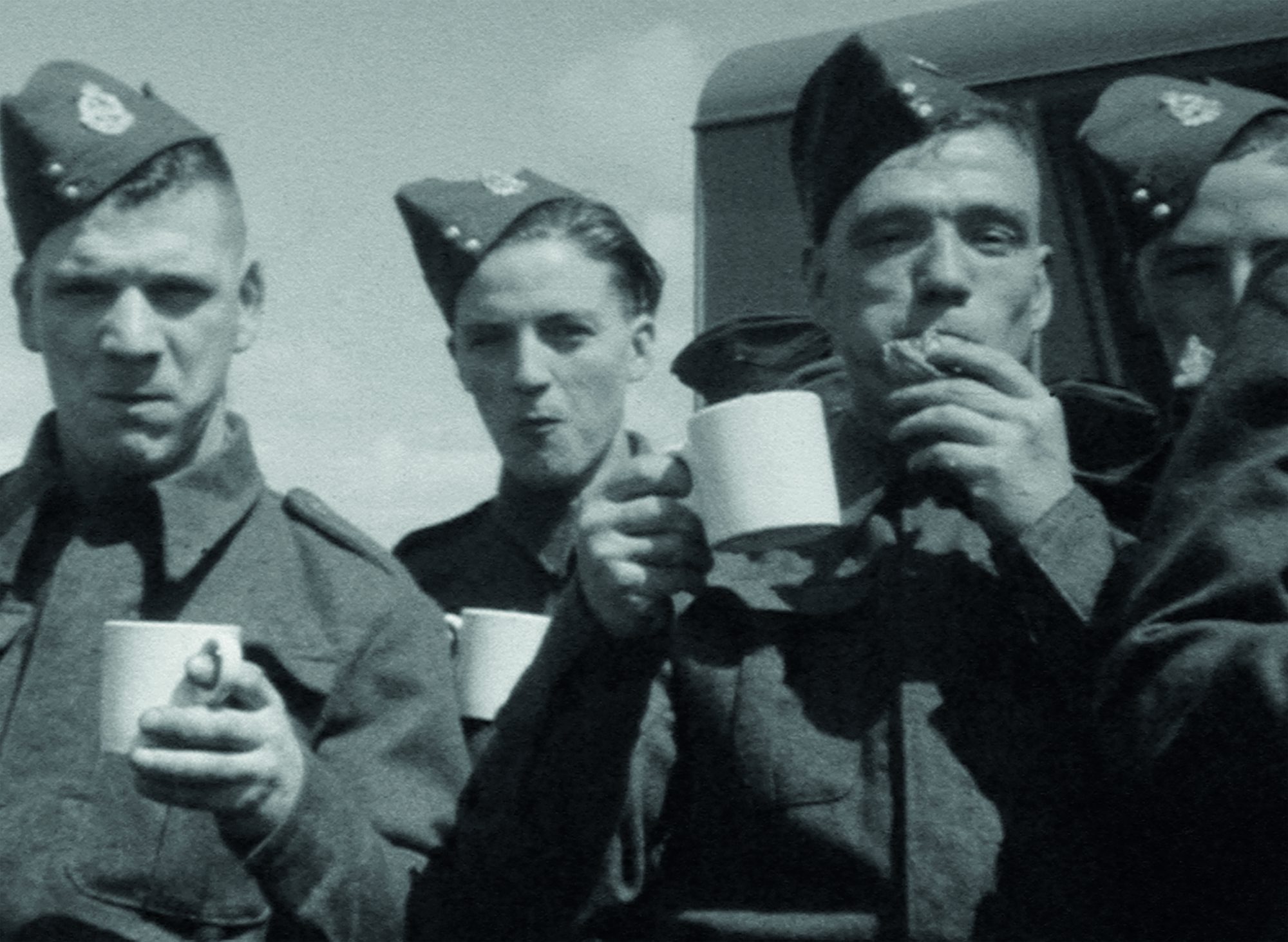
The Ministry of Education embraced Sam’s ideas, as did the Home Guard who used his wartime training films and the police who used his accident and crime prevention films. Sam continued to record specialist crafts and covered events in Burnley and elsewhere. On one memorable occasion, the visit of King George VI at Burnley’s Manchester Road station in 1945, a zealous security policeman saw Sam climbing on to his own car roof to film the monarch, grabbed him and seized his camera. Luckily, the local Chief Constable put him right: “Put him down. He’s our man.”
There was another right royal tale from the 1945 royal visit. Sam’s no-nonsense father Jimmy, who was president of Burnley miners, was surprised to be introduced to the King and Queen. The King told him: “You’ve worked down the pit all your life. It doesn’t seem to have done you any harm.”
Jimmy told the King: “Yes, but it hasn’t done me any good.”
Read more about Sam Hanna in, Round Our Way: Sam Hanna’s Visual Legacy by Heather Norris Nicholson.
Available for £25 from Pendle Press
